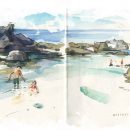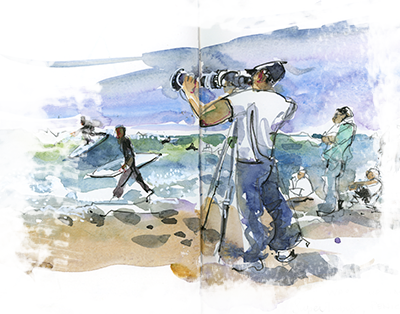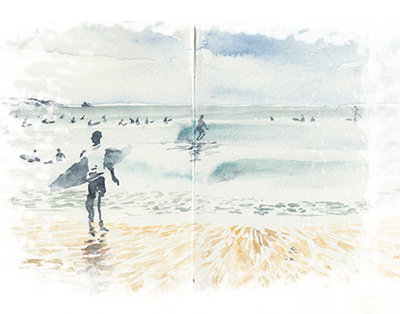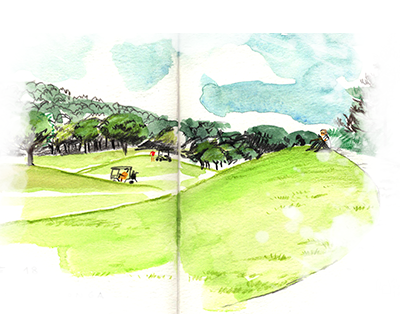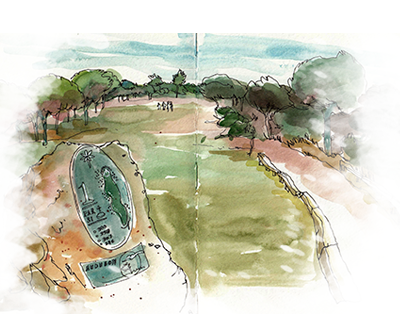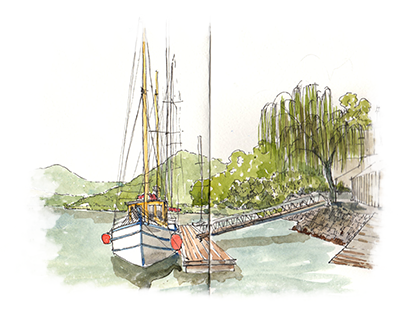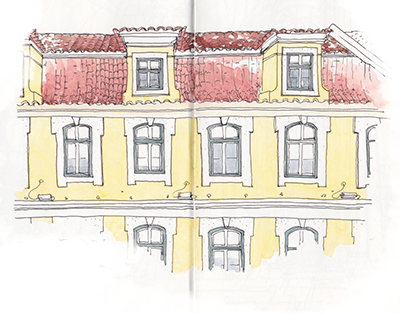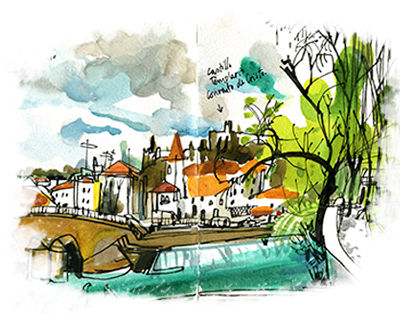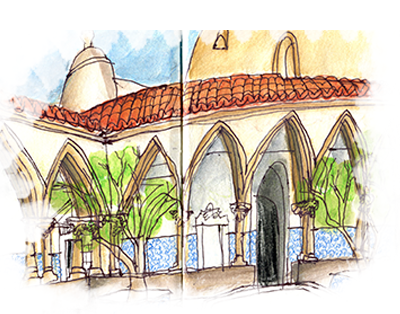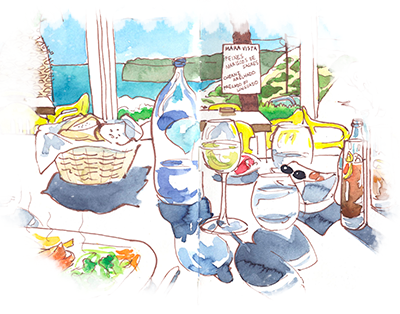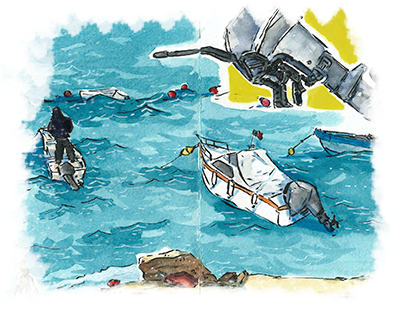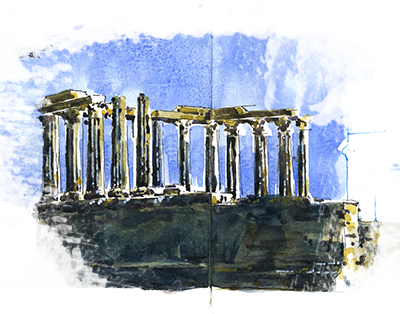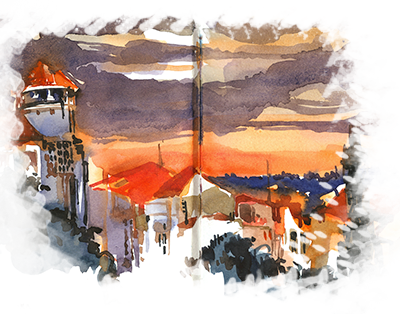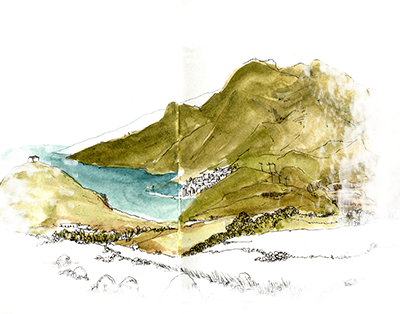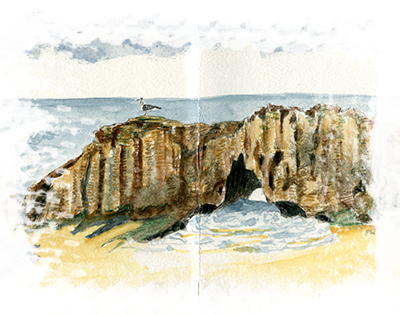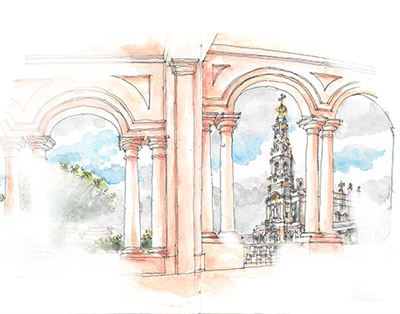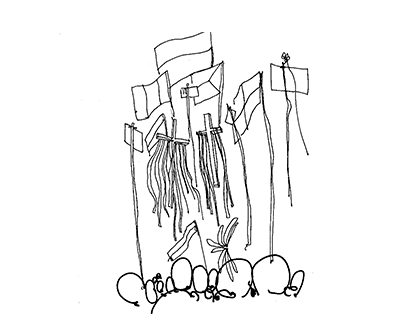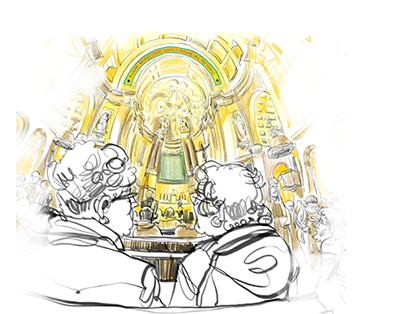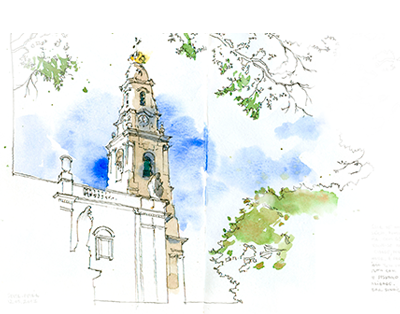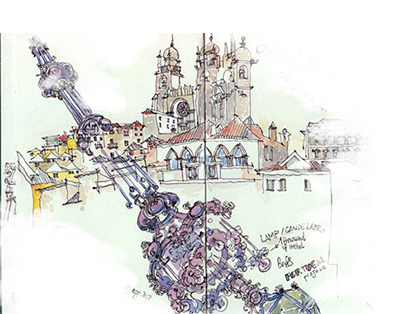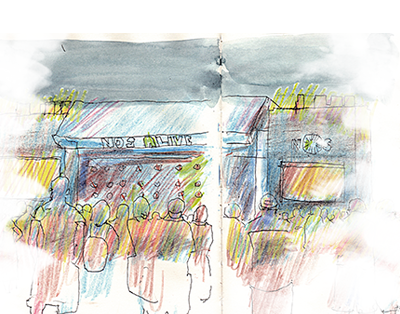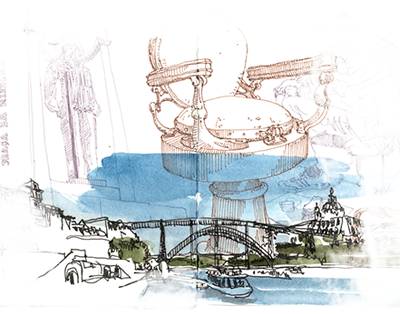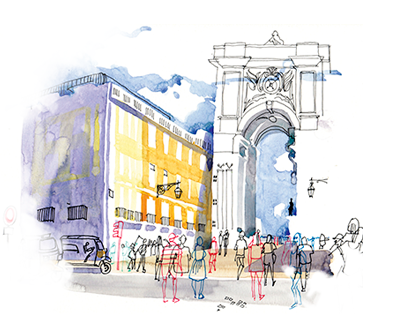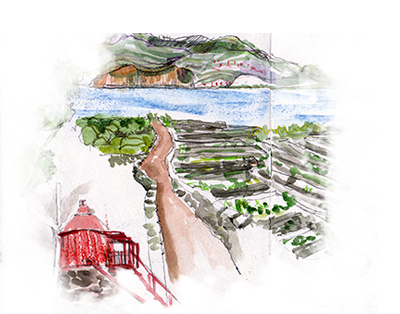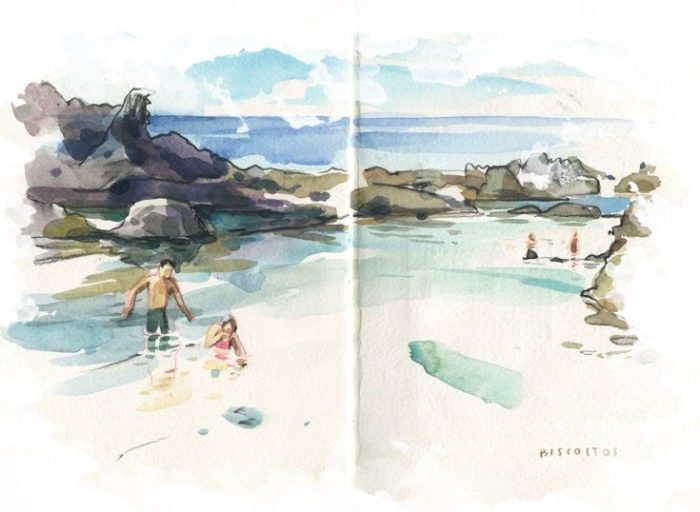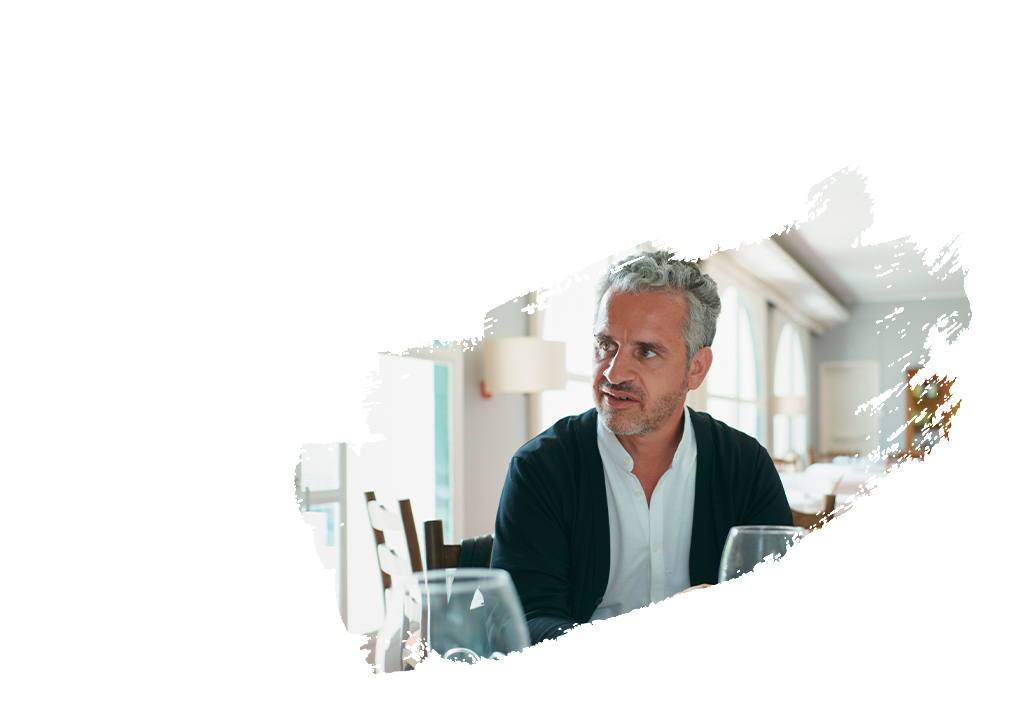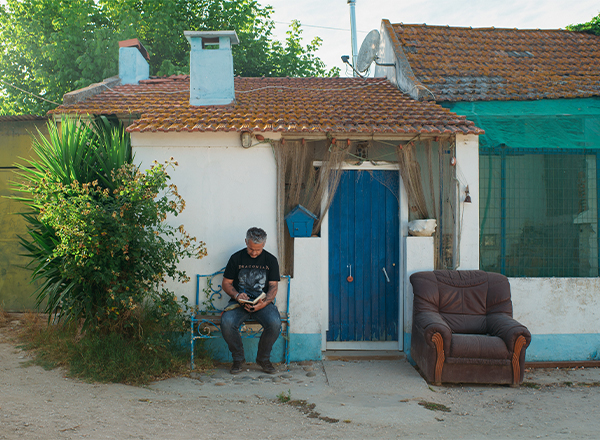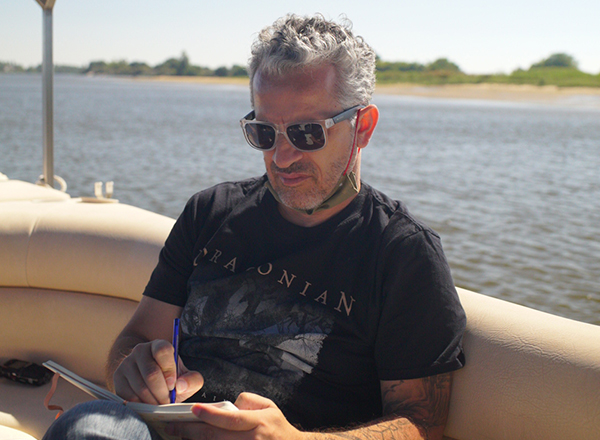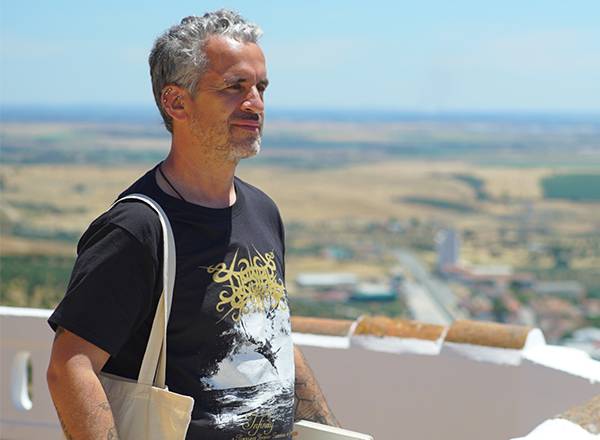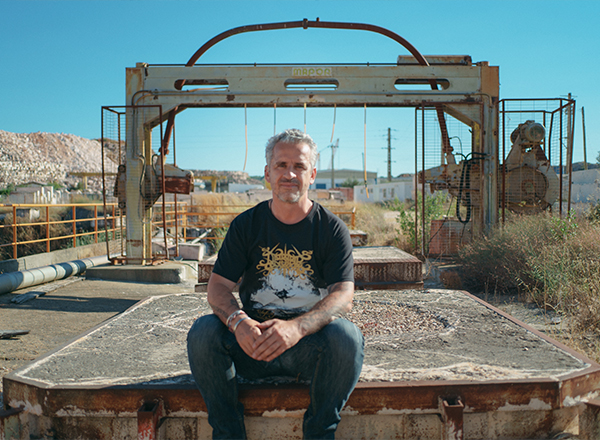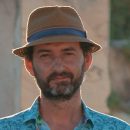One of the most high-profile Portuguese writers accepted the challenge to discover the Alentejo with Visit Portugal.
José Luís Peixoto was born in 1974 in Galveias, in the Ponte de Sor municipality.
His work covers a range of genres, from storytelling and theatre to novels and poetry, and he has been honoured with various literary awards such as the José Saramago Prize, the Libro d’Europa Prize, and the Oceanos Prize.
His books have been published in more than 30 languages.
Perhaps for those birds a return to the Tagus is also a beginning; they start something there.
I don’t recall the end. Walking along the Rua Direita in Monsaraz, with the castle in the background, the stones dictate your steps. I took in all this time: millions of years of marble, centuries of architecture, years of flea markets, days of unexpected memories from the walk I started at the Tagus, still stuck to my skin. And right there, as I advanced, a few dozen metres away, I made out three men sitting down. When I got closer, their necks moved with the same slow speed as my walk, and they didn’t miss a thing. I needed to find some courage. “Good morning.” These words are so simple and mundane, but my voice, soaring like a bird, pulled me out of myself with the boldness and uncertainty of existence. However, the three men responded immediately with a chorus of “Good morning!” It was as if the entire Alentejo was responding to me, accepting me. I don’t recall the end. At the top of the tower of Monsaraz castle I could make out the sky, the fields, the cork oak forest, faraway sounds, birds enjoying the distance. And the certainty that the Alentejo is endless. When the Alentejo ends, everything in existence ends too.
Swallows always have somewhere to go, and they hurry, they cannot flap their wings more slowly.
What surprised you on this journey?
It was memorable to have the chance to devote myself solely to seeing places that by and large I was already very familiar with. I think it helped me perceive, more consistently, all the cultural and historical bonds that unite this territory. The historical, scenic and human richness of the Alto Alentejo is extraordinary. Its myriad features never cease to surprise me.
Tell us something you saw that you had never seen before.
I could give many examples. The ""Tagus of the Avieiros [river fishermen]"" is worth mentioning due to the incredible beauty of the migratory birds. I was familiar with these landscapes from literary descriptions; having the opportunity to behold them in real life, in all their solemn grandeur, is something I will never forget. I also thought the ruins of Ammaia, in the municipality of Marvão, were an absolute revelation. It was fascinating to visit this area, hearing all the descriptions and imagining the time when it was fully occupied by a settlement woven into the tapestry of Roman life. I even ended up writing an article about it, which I published in the Volta ao Mundo magazine.
If you had to tell a child about your journey, what would you say?
I would say that there are often incredible stories behind things that we've already seen many times. The places we find ourselves, the rooms or streets where we are, have an immense past. Paying attention to all this is travelling as well.
What was the greatest challenge of this experience? And the greatest reward?
I think the greatest challenge was absorbing and then condensing the enormous amount of information we took in. At the same time, the greatest reward was reflecting on that information, processing it, and feeling it become part of me.




